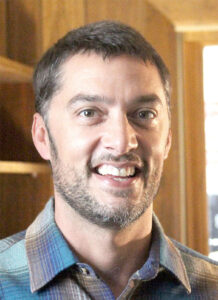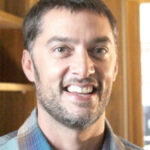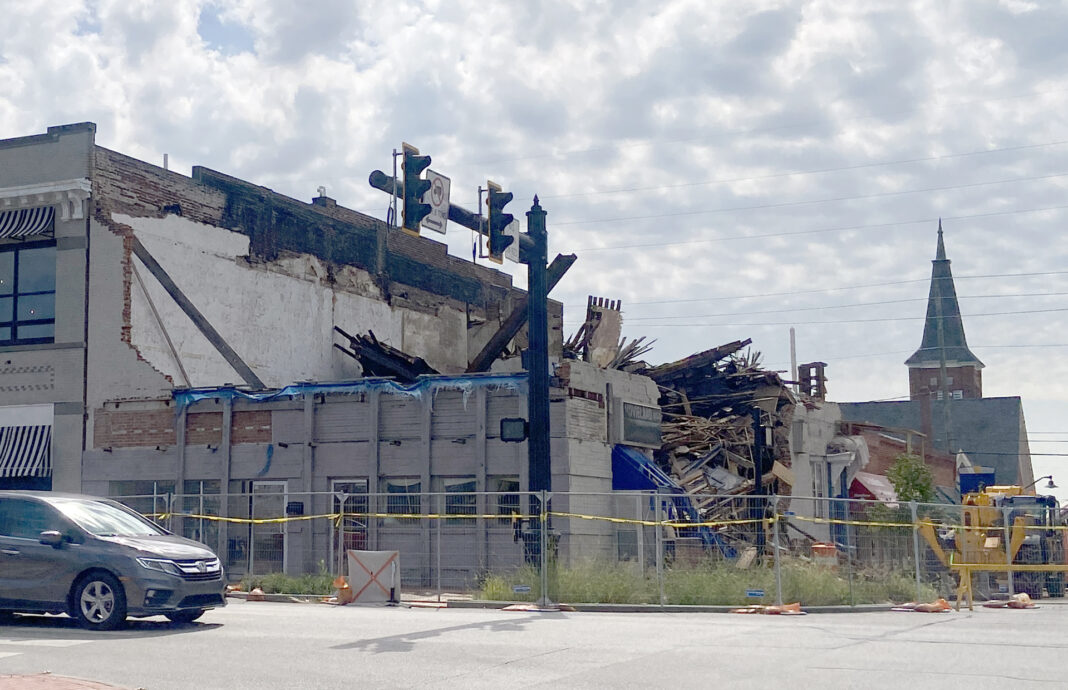
As we approached from the outside hallway, we had to take turns entering the revolving black cylinder one by one. Once inside, it felt like we entered a new dimension.
A small red bulb helped illuminate the otherwise dark room, as much as a red bulb can anyway. But once our eyes adjusted, we could easily find our workstations and begin loading, projecting, dodging and burning.
I can still remember the smell of the chemical solutions required in the three-step process to develop, fix and preserve the images we created.
Digital photography is certainly convenient, with limitless possibilities in the “editing” process. But back then, film photography was an art form all its own, and much of the artistry took place in the dark room.
I was taking Photography 101 in college at the time, and the dark room was the epicenter of our workload.
That Tuesday morning, our class was gathered in the dark room for our three-hour “lab day.” The professor made the rounds, giving tips to each of us as we fumbled with the science behind film development.
About an hour into our session, the black cylinder of the entryway rotated unexpectedly, and in walked the lab assistant, who typically stayed out of the dark room on lab days.
She had tears streaming down her face and could hardly get the words out as the concerned professor approached.
I managed to overhear a few words as she struggled to speak.
“Airplane … New York … attack.”
The professor and the assistant took turns exiting the room so they could finish the discussion in the outside hallway.
Within a couple of minutes, the professor returned, and in a somber voice, she announced that class was cancelled for the day.
After tidying up our workstations, each of us slowly exited the dark room and returned to the fluorescent lighting of the real world.
At the far end of the hallway was a student lounge where a small TV flashed the breaking news out of New York City. An airplane had crashed into the North Tower of World Trade Center, and the live broadcast showed smoke billowing from high atop the towering building, as paper slowly floated to the ground like parade confetti.
Our eyes could hardly fathom what we were seeing as broadcasters speculated as to what had just occurred, and confusion plagued us all.
Then, as the live broadcast continued, we saw the second plane hit the South Tower. A massive explosion followed, along with a collective gasp by those watching alongside me.
The confusion was no more. This was a coordinated attack with evil intent.
I struggled to comprehend what would motivate anyone to commit such an atrocity, and in fact, I soon found myself tucked away at the bottom of a neglected stairwell, shedding tears at the reality of such evil. It was not anger that spurred those tears, but disbelief and, dare I say, pity.
To have such hatred in your heart, to be willing to kill so many innocent people, to be so consumed by evil, well, that must be hell.
I gathered myself and returned to the lounge, witnessing downtown Manhattan morph into a war zone. First responders rushed to the scene as civilians rushed away from the scene. The sky was filled with debris — and the occasional body — as fire consumed the upper floors.
Soon enough, I went home and spent the rest of the day watching it all unfold. The rescue efforts of police, fire and EMS personnel. The panic and desperation. The collapsing buildings. The ash cloud. The death and destruction. All broadcast live for the world to see.
The event was unlike any other in human history. Gone are the days when such atrocities are reported after the fact in written form. This was on live TV without filter or editorial discretion. This was an unadulterated glimpse at the realities of our world — a world where evil assuredly exists. Where brutality and violence are at the fore.
For many, the scenes that unfolded that day were too much for the psyche to bear. But amid the ashes rose the counterbalance. Stories of hope, and courage, and sacrifice, and compassion soon emerged.
As Mr. Fred Rogers once recounted, “When I was a boy and I would see scary things in the news, my mother would say to me, ‘Look for the helpers. You will always find people who are helping.’”
On the heels of the attack, we learned of so many helpers — and it started with first responders. Nearly 500 lost their lives that day, including more than 50 military personnel at the Pentagon.
Last year, I was hardpressed to find much coverage on the anniversary of 9/11, as our 24-hour news cycle has “more important” coverage to present.
But that day 24 years ago must never be forgotten. And we’re now contending with those who were not alive to witness the atrocity.
We must thus serve as the living reminder. We are tasked with imparting our eyewitness accounts, underscoring the enormity of that day.
And my hope is that we can embrace the spirit of the “helpers.” The evils of the human heart are ingrained, and our battle for “good” is imperative.
Lord knows our world needs it now more than ever.
Editor Stephen Crane is a husband, father of four and Morgan County native. Contact him at 765-201-0010 or at scrane@morgancountycorrespondent.com.








